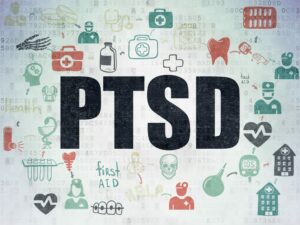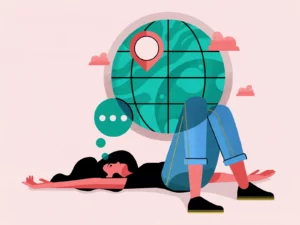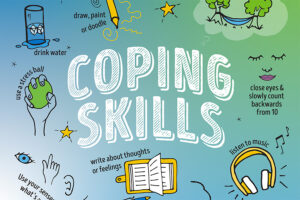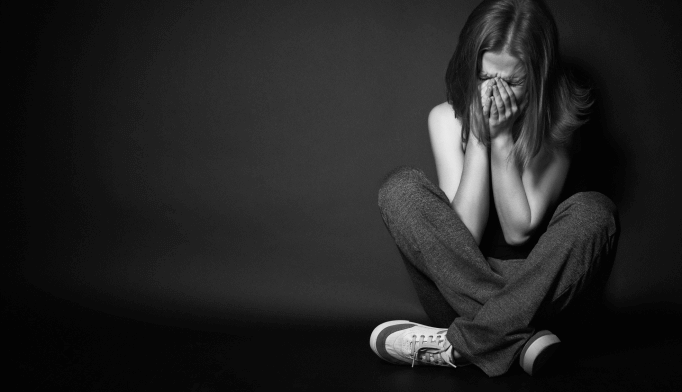It’s not easy being a teenager. You’re trying to figure out who you are, what you want in life, and how to make friends – all while hormones are raging and your brain is still developing. For some teenagers, this process is made even more difficult by trauma and anxiety. If you or someone you know is struggling with teenage PTSD, don’t worry – there is help available. In this blog post, we will discuss the symptoms of teenage PTSD, as well as how to get help.
Contents
Defining Teenage PTSD
 PTSD, popular for its psychological definition, is a set of reactions that can develop after someone experiences or witnesses a traumatic event. The full form is post-traumatic stress disorder, which is very suggestive by its name. “Post-traumatic” means “after the event” and “stress disorder” refers to the emotional response that can result in intrusive thoughts, flashbacks, avoidance, changes in mood and activity levels, and more.
PTSD, popular for its psychological definition, is a set of reactions that can develop after someone experiences or witnesses a traumatic event. The full form is post-traumatic stress disorder, which is very suggestive by its name. “Post-traumatic” means “after the event” and “stress disorder” refers to the emotional response that can result in intrusive thoughts, flashbacks, avoidance, changes in mood and activity levels, and more.
While it was once believed that only adults could suffer from PTSD, we now know that children and adolescents are also susceptible. In fact, teenagers may be even more likely to develop the disorder than adults, due to the fact that their brains are still developing.
Furthermore, the impacts of PTSD can be even more severe in teenagers than in adults. This is because teenagers are still trying to figure out who they are and their place in the world. When trauma and anxiety enter the picture, it can make things even more difficult. Moreover, since the biological, emotional, cognitive, and social systems are all still developing during adolescence, the symptoms of PTSD can be even more disruptive. Since trauma is something that holds a lot of power in our minds and bodies, experiencing trauma at such a delicate and crucial time in life can have a profound impact.
Warning Signs
 To know whether or not a teenager is struggling with PTSD, it is very important to know its symptoms. The warning signs of PTSD are majorly divided into 4 categories:
To know whether or not a teenager is struggling with PTSD, it is very important to know its symptoms. The warning signs of PTSD are majorly divided into 4 categories:
- Re-experiencing the trauma: This can manifest in the form of intrusive thoughts, nightmares, and flashbacks. The teen may feel like they are reliving the event over and over again.
- Avoidance: The child may avoid people, places, activities, or things that remind them of the trauma. They may even try to avoid thinking or talking about the event altogether.
- Negative changes in mood and thought: The teenager may feel hopeless, helpless, or detached from others. They may have negative thoughts about themselves or the world around them. They may also lose interest in activities that they used to enjoy.
- Changes in physical and emotional reactions: The person may be easily startled, feel on edge, or experience problems sleeping. They may also have outbursts of anger or rage. It can also be very difficult to concentrate.
If you notice any of these symptoms in yourself or someone you know, it’s important to seek help. PTSD in teens can be alarmingly common, but with the right help, it is possible to recover.
Causes And Risk Factors
PTSD in teens can be caused by a varying number of factors. Because it is such a complex and dynamic disorder, the root causes can be multiple. When specifically talking about teens, the following can be a few possible causes. These can include (but not be limited to):
- Abuse: This is one of the most common and scariest causes of PTSD in teens. If a teenager has been a victim of abuse, be it physical, sexual, emotional, or any other kind, they may be at a higher risk of developing PTSD.
- Natural disasters: If a teenager has gone through a natural disaster, such as a hurricane, tornado, or earthquake, they may be more likely to develop the disorder.
- Violent crimes: If a teenager has been the victim of (or witness to) a violent crime, such as a mugging, robbery, or shooting, they may be at a higher risk for PTSD.
- Bullying: Unfortunately, bullying has become increasingly common in recent years. If a teenager is being bullied, either in person or online, it can take a toll on their mental health and increase the likelihood of developing PTSD.
- Unhealthy family environment: It is rightly said that the family is the first step in a child’s socialization process. If a teenager comes from an unhealthy family environment, characterized by abuse, neglect, or any other form of trauma, it can increase their risk of developing PTSD.
- Accidents: A mishap or accident, such as a car crash, can also be a cause of PTSD in teens.
While these are some of the most common causes of PTSD in teens, it is important to remember that anyone can develop
While any of these events can be traumatic, it’s important to remember that not everyone who experiences or witnesses them will develop PTSD. In fact, most people will not. So, what makes some teenagers more susceptible than others? The answer to this question lies within the fact that PTSD is a reaction to trauma, and not all people react to trauma in the same way.
There are also a number of risk factors that can increase the likelihood of developing teenage PTSD. These include:
- Hormonal changes
- Having a history of mental illness
- Having a history of trauma
- Being exposed to multiple traumas
- Lack of social support
- Not having a good coping mechanism.
If you or someone you know is struggling with teenage PTSD, there is help available. The first step is to seek professional help. If you are not sure where to start, your doctor can refer you to a mental health professional.
Consequences
Traumatic events can change a teenager’s life forever. The consequences and aftereffects of PTSD can be far-reaching and long-lasting. If left untreated, PTSD can affect a large portion of a teen’s life.
Physical
It is no secret that our bodies and minds are connected. The physical symptoms of PTSD can be just as debilitating as the emotional ones. Common physical symptoms include:
- Headaches
- Stomach problems
- Sleep problems
- Fatigue
- Chest pain
- Appetite or weight fluctuations
Emotional
PTSD can also take a toll on a teenager’s emotions. They may feel:

- Guilt
- Shame
- Numbness
- Anxious
- Restlessness
- Regret
- Hyperarousal
- Hopeless
- Anger
Psychological
Traumatic events are powerful enough to alter our brain chemistry. The psychological symptoms of PTSD can be just as dangerous as the physical ones and can include:
- Substance abuse
- Depression
- Anxiety disorders
- Personality disorders
- Obsessive-compulsive disorder
- Eating disorders
- Self-harm or thoughts of suicide
Cognitive
Cognition is the mind’s ability to process and make sense of information. The cognitive symptoms of PTSD can make it difficult for a teenager to think clearly or focus on tasks. They may have:
- Memory problems
- Trouble concentrating
- Brain fog
- Trouble making decisions
- Intrusive thoughts
- Mood swings
Social
 Social life also takes a hit when PTSD is present. It can be hard for a teenager to trust people, be around large groups, or even leave the house. As a result, they may:
Social life also takes a hit when PTSD is present. It can be hard for a teenager to trust people, be around large groups, or even leave the house. As a result, they may:
- Isolate themselves
- Have issues communicating
- Lose interest in activities they used to enjoy
- Experience relationship problems
Productivity
Lastly, being productive is a challenge when PTSD is present. It can be hard to focus on work, school, or any other type of task when you are dealing with the symptoms of PTSD. As a result, many people with PTSD:
- Have trouble keeping up with deadlines
- Procrastinate
- Do poorly in school
- Avoid taking care of responsibilities
PTSD is a serious disorder that should not be taken lightly. If you suspect that you or someone you know may be struggling with PTSD, it is important to seek help as soon as possible. Early intervention is key to recovery. With the right help, it is possible for anyone to overcome this disorder and live a happy, healthy life.
Ways To Deal With Teenage PTSD
Luckily, there are many ways to deal with teenage PTSD. Here are a few examples.
Get a diagnosis
The foremost step to dealing with PTSD is to get a diagnosis. This will give you a better understanding of your symptoms and how to treat them. A disorder as profound and serious as PTSD requires a professional diagnosis. The right type of professional with adequate license and training will be able to give you an accurate diagnosis. Some of the most common diagnostic tools for PTSD include the clinician-administered PTSD scale for DSM-IV and the Structured Clinical Interview for DSM-IV.
Seek professional treatment
 A big part of overcoming PTSD is learning how to cope with the symptoms. A therapist can help you do this in a safe and healthy way. They may use therapy, medication, or a combination of both to help you manage your symptoms. Some of the most common therapies and medicines include things such as:
A big part of overcoming PTSD is learning how to cope with the symptoms. A therapist can help you do this in a safe and healthy way. They may use therapy, medication, or a combination of both to help you manage your symptoms. Some of the most common therapies and medicines include things such as:
- Cognitive-behavioral therapy
- Prolonged exposure therapy
- Eye movement desensitization and reprocessing (EMDR)
- Support groups
- Selective serotonin reuptake inhibitors (SSRIs)
- Serotonin and norepinephrine reuptake inhibitors (SNRIs)
- Tricyclic antidepressants (TCAs)
- Monoamine oxidase inhibitors (MAOIs)
It is important to maintain constant contact and communication with your therapist. They will be able to help you understand your symptoms and how to deal with them in a healthy way.
Adapt a better lifestyle
Lifestyle is one of the key factors that contribute to our mental health. An unhealthy lifestyle can worsen the symptoms of PTSD and make it difficult to cope with them. Conversely, a healthy lifestyle can help us better manage our symptoms. Some lifestyle changes you can make include:
- Eating a balanced diet
- Exercising regularly
- Getting enough sleep
- Practicing relaxation techniques
- Limiting alcohol and drug intake
- Avoiding triggers
All these account for a better and healthier lifestyle that can help improve your symptoms.
Form healthy coping mechanisms
 When we are faced with a traumatic event, it is natural to form coping mechanisms. However, some of these mechanisms can be unhealthy and only serve to make our symptoms worse. Some unhealthy coping mechanisms include:
When we are faced with a traumatic event, it is natural to form coping mechanisms. However, some of these mechanisms can be unhealthy and only serve to make our symptoms worse. Some unhealthy coping mechanisms include:
- Substance abuse
- Avoidance behaviors
- Self-harm
- Engaging in risky behaviors
It is important to be aware of these unhealthy coping mechanisms and avoid them at all costs. Instead, try to form healthy coping mechanisms such as:
- Spending time with loved ones
- Staying active
- Expressing yourself through art
- Writing in a journal
- Spending time in nature
These are only a few examples of how you can deal with teenage PTSD. It is important to remember that everyone copes differently and what works for one person may not work for another.
Lastly, the support and validation of others can be crucial in the recovery process. When we feel alone and isolated, our symptoms can worsen. Try to expand your social support by doing things such as:
- Spending time with loved ones
- Joining a support group
- Reaching out to friends and family
- Building a support system of people who understand what you’re going through
All these can make a world of difference. If you or someone you know is struggling with PTSD, don’t hesitate to reach out for help. There are many resources available to those who need it. Remember, you are not alone in this. With the right help, you can overcome this disorder and live a happy as well as healthy life.
Conclusion
In conclusion, we can say that teenage PTSD is a serious condition that should not be ignored. It is a condition that can have a negative impact on a teenager’s life if left untreated. There are many resources available to help teenagers deal with their PTSD. With the right support, teenagers can overcome their PTSD and lead healthy, successful lives.
If you or someone you know is looking for psychological help, Therapy Mantra is here for you. We are the leading providers of online therapy and counseling. Our team of highly trained and experienced therapists can provide assistance at the most affordable rates. Contact us today to learn more about our services. You may also visit our website to book an online therapy session or download our free Android or iOS app for more information.


